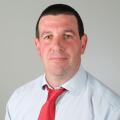THE Dorset coast has been mapped as part of a project to help develop sustainable aquaculture.
Aquaculture, also known as aquafarming, is the farming of fish, shellfish, molluscs, crustaceans, aquatic plants, algae and other organisms.
This is contrasted with commercial fishing, which involves the harvesting of wild fish.
This new interactive map, which accompanied a report detailing how the UK could take further steps to increase sustainable aquaculture production, covers the whole of the Dorset and East Devon coastline, out to six nautical miles.
It also notes existing marine activity, such as military exercise areas and underwater hazards including shipwrecks.
The project has been funded through the Dorset and East Devon Fisheries Local Action Group (FLAG) and match-funded by the Department for the Environment, Food and Rural Affairs (Defra), with support from The Fishmongers’ Company.
It was carried out by the Centre for Environment, Fisheries and Aquaculture Science (Cefas) in Weymouth and provides potential aquaculture businesses with locations which might be suitable for development without introducing additional pressures on other marine users.
Martin Sutcliffe, aquaculture and fisheries development officer for Dorset Coast Forum which hosted the FLAG programme, said “The South Marine Plan is a great tool for sustainable development of our marine environment but, often, the scale is much too large for businesses looking to develop aquaculture sites.
"Cefas’ spatial mapping tool really looks at the Dorset coast in much finer detail allowing potential investors to pinpoint the best spot to develop.”
Dorset FLAG says the project has been developed alongside extensive marine stakeholder engagement, which included commercial fishermen.
Martin said: “Dorset has one of the highest numbers of inshore commercial fishing boats anywhere in England which, along with some of the best sailing waters in the southwest, makes our inshore waters very busy.
"So, it was important to the development of this tool that we spoke to the people who are out there day to day earning a living or enjoying the fantastic bays and waters of the area."
The map lets potential investors zoom in on specific areas and see which species are most suited to grow there.
Martin said: “Aquaculture in England is going to look very different to the Scottish industry, which focuses on salmon. England’s coastline isn’t really suitable for large cages of fish, but it is suited to the growing of shellfish and seaweed on long lines, as shown in Lyme Bay which already has a large mussel farm offshore, producing rope grown mussels.”
Simon Kershaw, who led the project for Cefas, said: “This study has highlighted significant potential areas for different species and systems within the FLAG area in which aquaculture could contribute to increasing the share of ‘low-carbon’ protein from the ocean as a substitute for emission-intensive land-based animal proteins as a climate change mitigation strategy.
Visit dorsetaquaculture.co.uk/map/ to view the interactive map.






Comments: Our rules
We want our comments to be a lively and valuable part of our community - a place where readers can debate and engage with the most important local issues. The ability to comment on our stories is a privilege, not a right, however, and that privilege may be withdrawn if it is abused or misused.
Please report any comments that break our rules.
Read the rules here